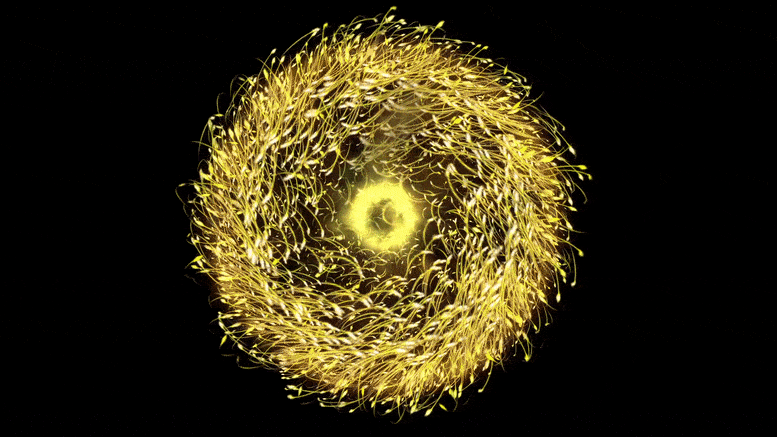Researchers at Lund University in Sweden have discovered an innovative way to create nano-sized magnetic particles with the help of ultrafast laser light pulses. This is a giant Leap in quantum computers of the future.
Magnetic skyrmions are sometimes described as magnetic vortices. The skyrmion state is quite peculiar: the orientation of the magnetization is best described as a kind of swirling magnetism.
Using skyrmions for technical purposes requires efficient ways of writing, erasing, and manipulating the particles on short time scales, and with high spatial precision. This is not easy to achieve.

In a new study, researchers Claudio Verdozzi from Lund University and Emil Viñas Boström and Angel Rubio from the Max Planck Institute for the Structure and Dynamics of Matter in Hamburg have found a new approach.
“In our study, we have theoretically shown how it is possible to meet one of these requirements, that is, how to create magnetic skyrmions in ultra-short time scales using pulses of laser light,” says Claudio Verdozzi, a physics researcher at Lund University.
The researchers used femtosecond laser pulses to show that it is possible to create skyrmions ultra-fast.
“Our results are of great relevance to creating more energy-efficient technical components. Our study shows that light can be used to manipulate localized magnetic excitations in very short time scales,” says Claudio Verdozzi.

Magnetic excitations such as skyrmions and so-called spin waves are also believed to be able to help reduce energy consumption in technological components, and can thus help to achieve future climate goals.
“Skyrmions are in focus for both theoretical and experimental research thanks to their technological potential. Also, their exotic magnetic patterns possess a conceptually and mathematically beautiful appeal that makes them very interesting,” concludes Claudio Verdozzi.


